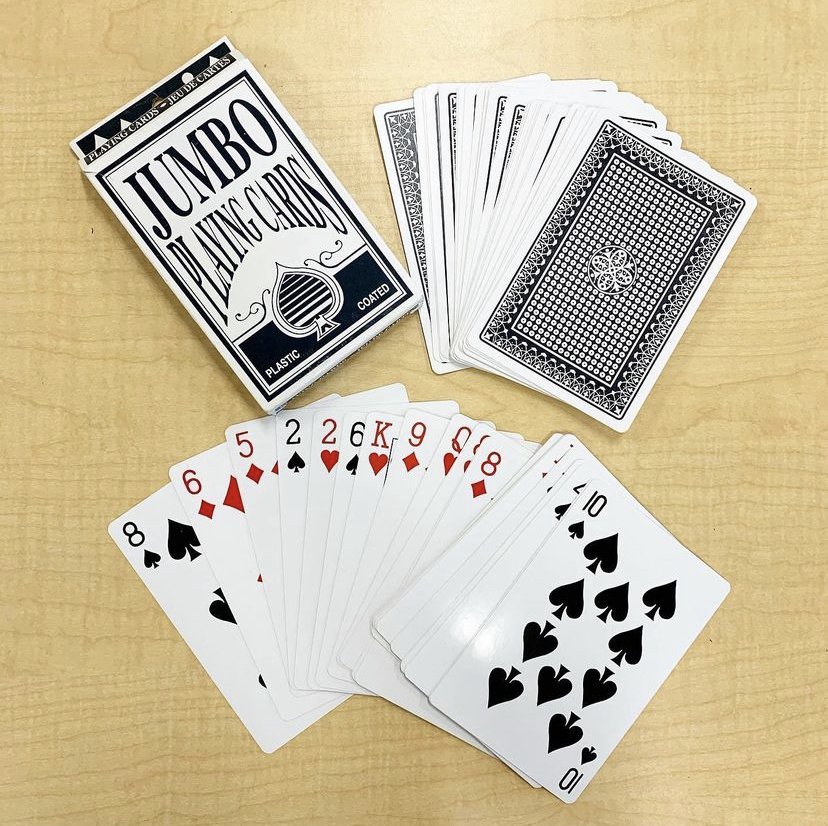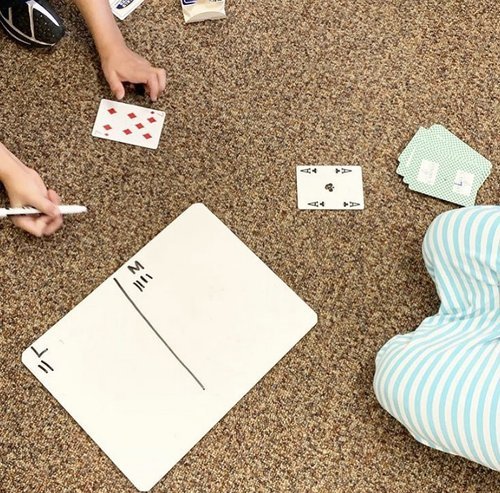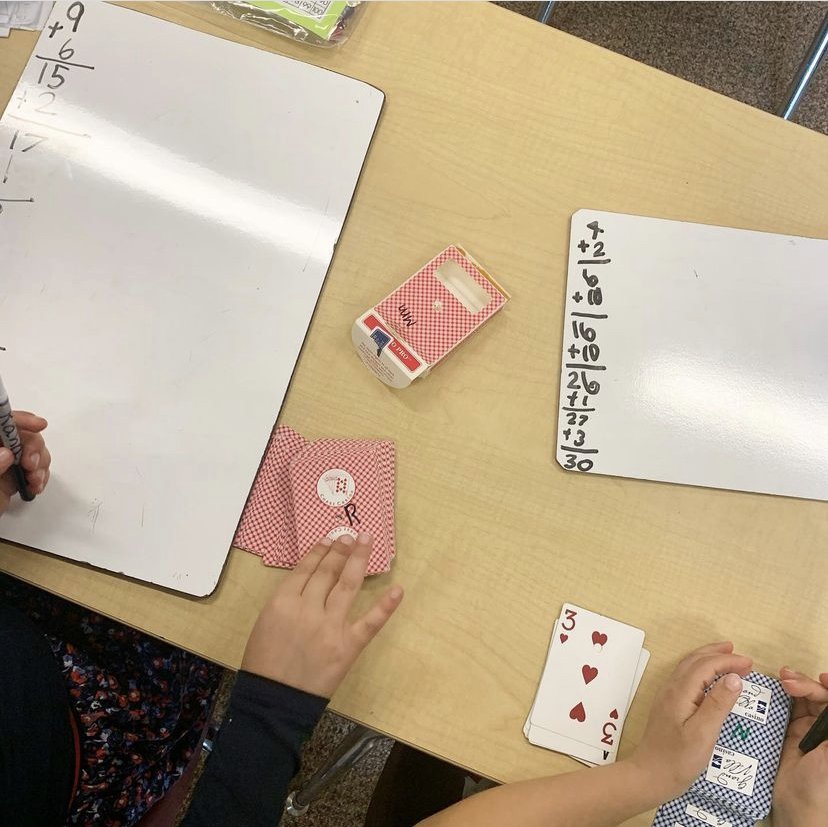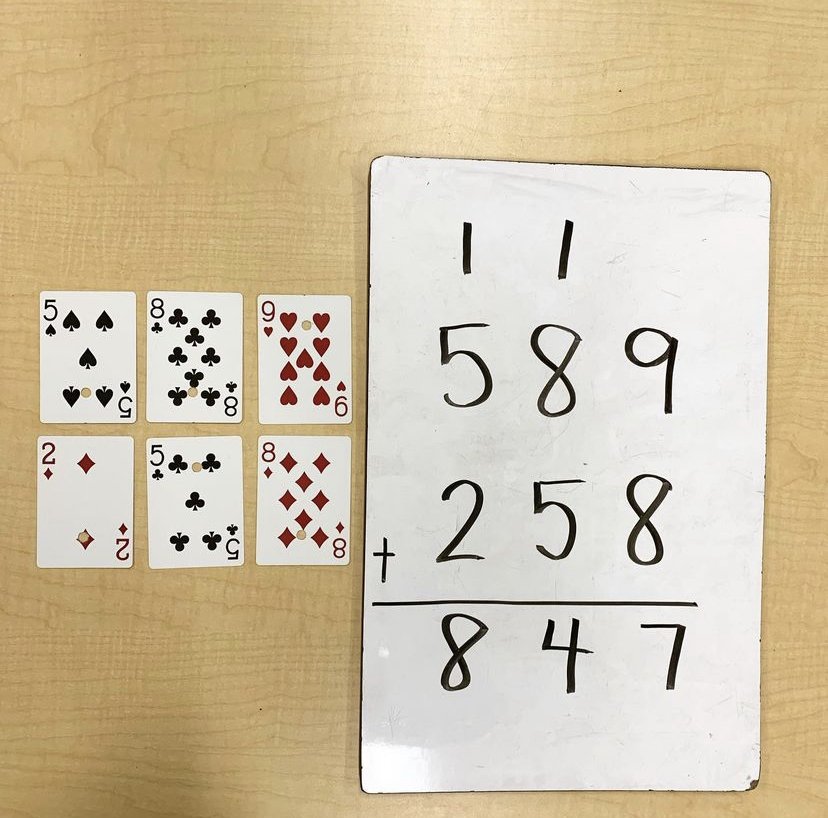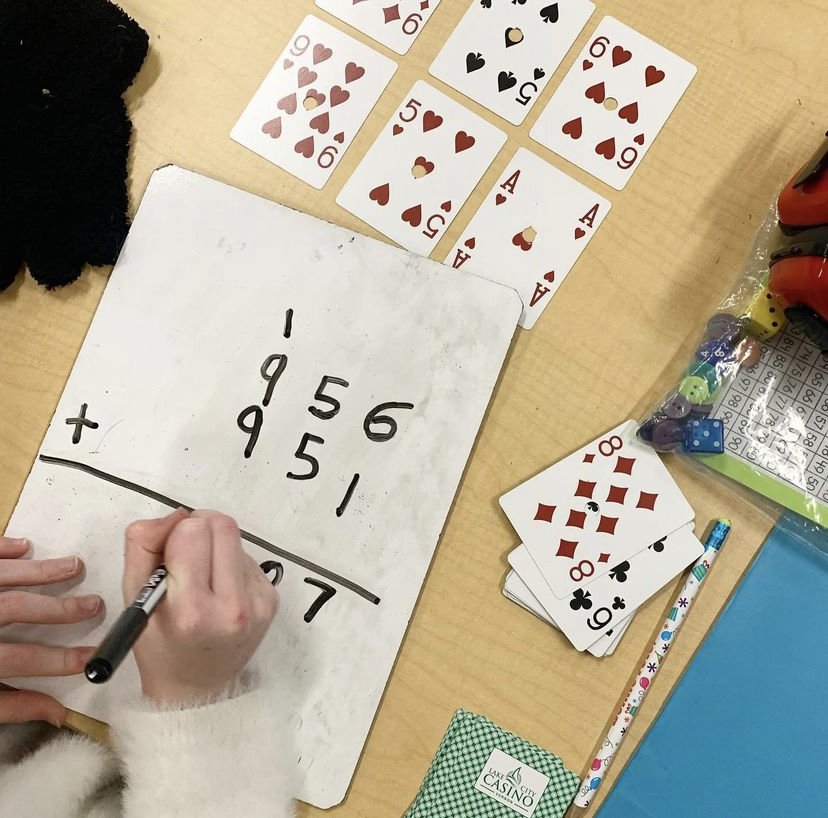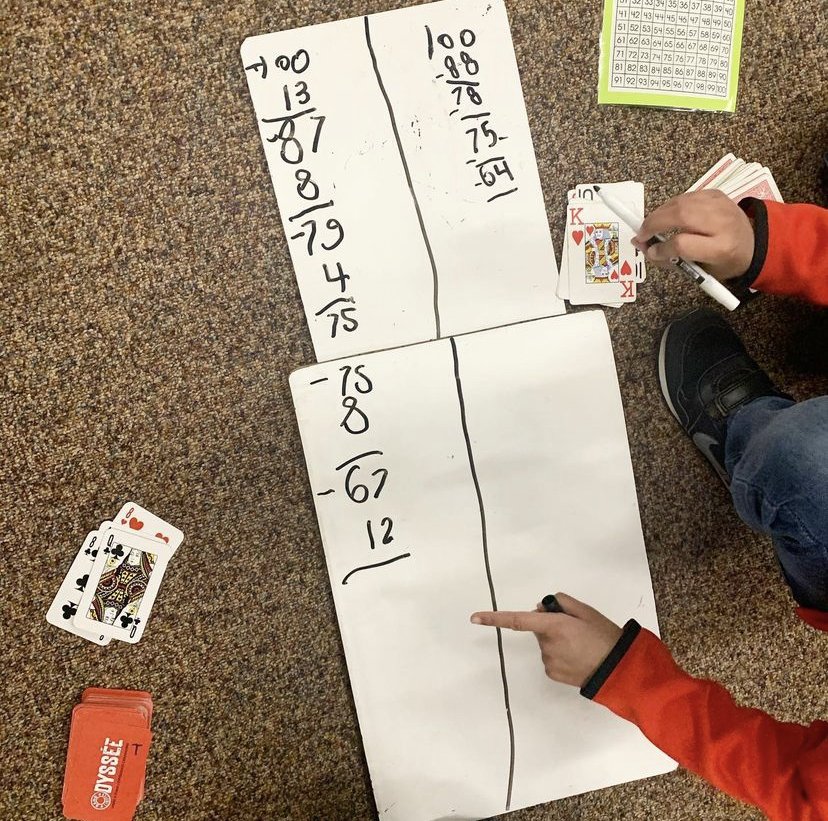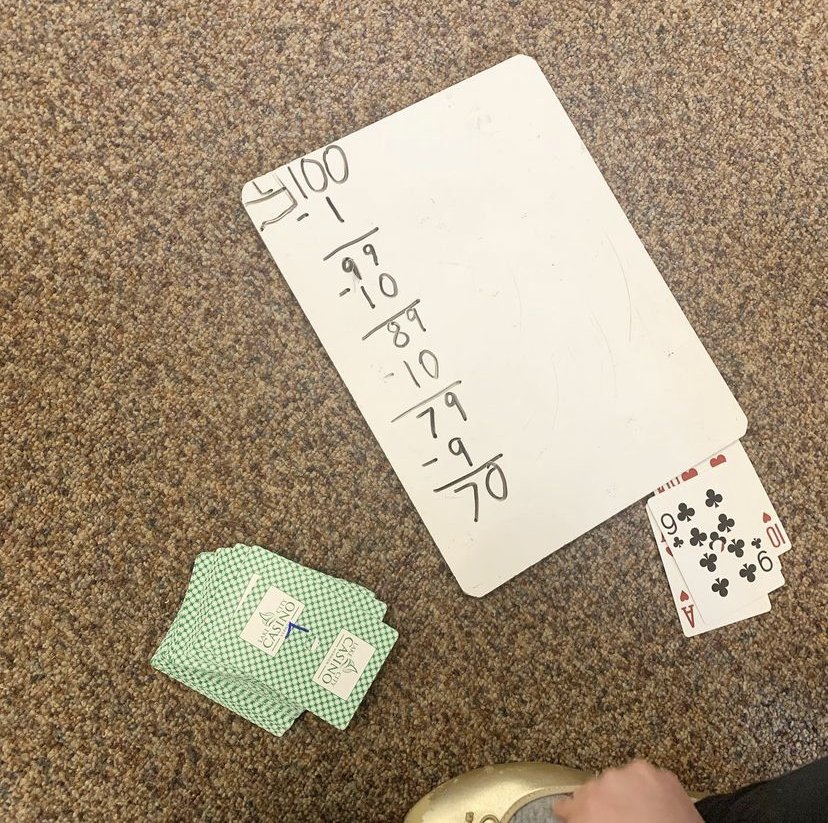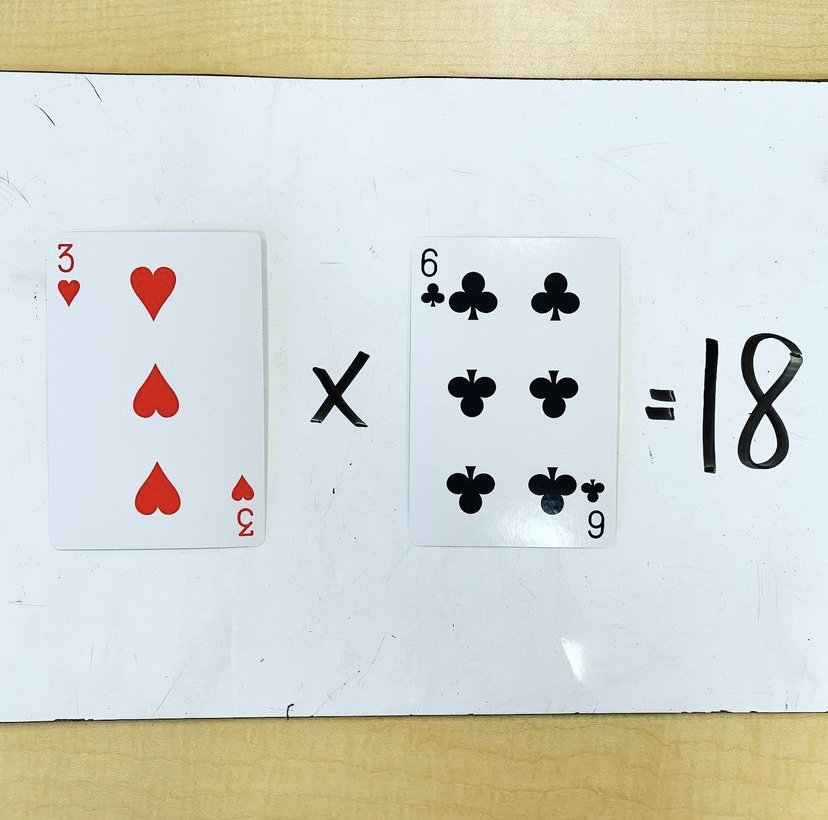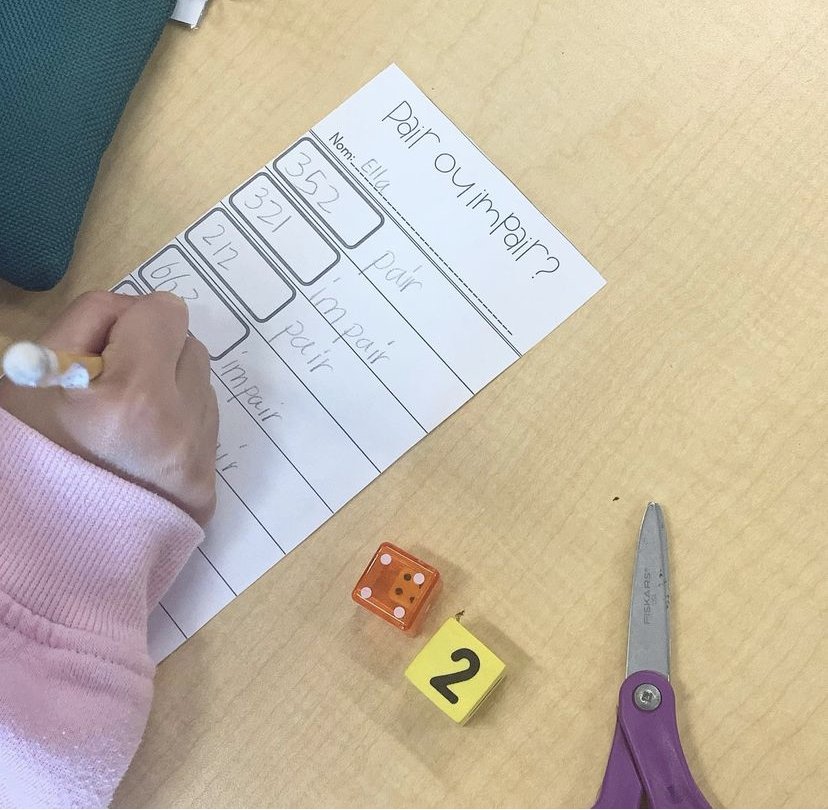How to Use Card Games to Teach Math
I like to teach math in a variety of ways so that students get a broad spectrum of learning experiences to help them develop their skills. From whiteboard activities to worksheets to digital and non-digital games…and card games! Using cards as a way to teach a math concept is sneaky math. It’s fun and doesn’t really feel like math.
While there are plenty of games that can be played sharing a deck, I like to have enough decks that each student can have their own. You can find tons of used card decks at the thrift store. Some casinos will give them to you too, so if you’ve got one nearby, check it out. Depending on your game, it may not be the biggest deal if a deck is missing a card or two but that’s definitely something to check for.
Remember that you can adapt these games to your level by adding or removing cards, changing the number of cards they draw, playing individually or with partners etc.
TEACHING THE GAMES:
I have a deck of large cards that I use for demonstration purposes. Sometimes I play against myself as if I was “Player 1” and then “Player 2” or sometimes I enlist help from a student to be my buddy. I play under the document camera so that everyone can see. If there are any special values that cards hold (ie: K = 0), I will write that on the board as a reminder.
KEEPING SCORE:
In some games where students could share a deck, they may show who is winning by taking more cards (like in War), but in others I have them keep track on a whiteboard. You could also use a scrap of paper or a notebook.
CARDS TIP:
I write a number or letter on the back of each card in a deck. That way if a card gets misplaced, we immediately know which deck it belongs to. This is especially helpful when you have cards that have the same design on the back.
Addition Games
Race to 100 (individual or partner)
Students need a whiteboard or paper to keep track of their scores
One at a time, students flip over one card and add it to their total. It’s best to use a scrap of paper or whiteboard so that they can add and keep track of their new number each time they have a turn.
Continue all the way up to 100. First to 100 without going over wins
Face cards = 10 unless you’d like them to be 11, 12, 13
Alternatively, face cards can be -10 so that it causes some frustration as they try to work their way up and end up going backwards.
Addition war (partner)
Each player turns over 2 cards. Find the sum between these two cards.
The player with the largest sum wins and gets a point (if sharing a deck, they take the 4 cards)
Face cards = 10 unless you’d like them to be 11, 12, 13
*ADAPTATION:
For 2 or 3 digit addition, have them flip over more cards, line them up and do the addition.
Same points rules apply.
Remove face cards for this version
Subtraction Games
Race to 0 (individual or partner)
Need a whiteboard or paper/pencil to keep score
Start with 100 at the top of your page or whiteboard. Each player takes a turn flipping over a card and subtracting it from their total.
Continue down to 0. First to 0 wins
J=11, Q =12, K=13 (Ace = 1)
Alternatively, the face cards can be +10 so that they end up going back up. My kids love this version because it causes some frustration!
Subtraction war (partner)
Each player turns over 2 cards. It’s important that the the larger number goes on top.
Find the difference between these two cards.
The player with the smallest difference wins and gets a point (if sharing a deck, they take the 4 cards)
Face cards = 10 unless you’d like them to be 11, 12, 13
*ADAPTATION:
For 2 or 3 digit subtraction, have them flip over more cards, line them up ensuring the larger set of 2 or 3 is on top and do the subtraction.
Same points rules apply.
Remove face cards for this version
Multiplication Games
Multiplication War (partner)
Remove face cards or leave them in (see adaptations note)
Player 1 turns over two cards and multiplies
Player 2 turns over two cards and multiplies
The player with the higher value wins a point
If sharing a deck, the winning player will take all the cards. If not sharing, the winning player simply gets a point
*ADAPTATION:
If leaving the face cards in, they may all equal 0 OR they may equal 11, 12, 13
If a 0 value face card is drawn, it’s an automatic 0 (_x0=0)
You can also remove any other cards to make it easier to solve if you have beginners (ie: only use cards from 1-5…)
Place Value Games
Place Value War (partner)
Each player turns over 2 or 3 cards (depending how many digits you want)
Write down the numbers and compare
The largest number wins a point
*Sheet from Tales of a French Teacher
Pattern Games
Use your deck of cards to make patterns. Make simple patterns like ABAB, ABCABC or even go further by creating growing patterns (ie: 1-1-2-1-2-3-1-2-3-4… or spade-heart-spade-spade-heart-spade-spade-spade-heart…)
Think about what attributes you can use to create patterns with:
face cards vs number cards
suits
colours
numbers
Number Sense Games
Odd & Even (individual)
Each player needs a deck and 1 die
Each player turns over 2 cards from their deck to make a 2 digit number (adapt to 1 or 3 digit if needed).
The die is rolled by one player.
If the roll is even, the bigger number wins.
If the roll is odd, the smaller number wins.
Rock-paper-scissors for a tie, or just replay that round
First player to 10 points wins
For this example, we used dice only to make our numbers but you can also do it with cards.
Just For Fun Games
Solitaire (individual)
Find rules online
Pandemic friendly War (partner)
Each player has their own deck.
At the same time, each player flips over a card.
The larger number wins a point (rather than taking the cards)
Garbage (individual or partner)
Each player deals ten cards face down in front of them (two rows of five)
The rest of the cards stay face down in a draw pile.
Player 1 draws a card, say a 4. Player counts to the fourth card, removes it and replaces it with the 4 face up in it’s spot. Looking at the card that was removed, can it be placed somewhere else (1-10)? If not, place it in a discard pile.
Player 2 takes a turn to see if they can replace any face down cards with a drawn card.
If a player draws a face card or a number that has already been turned up, the turn is over and the next player goes.



